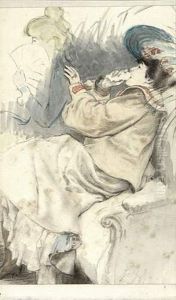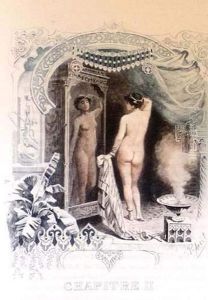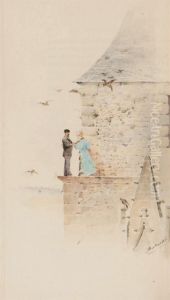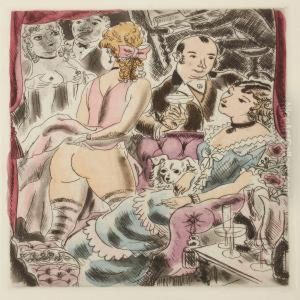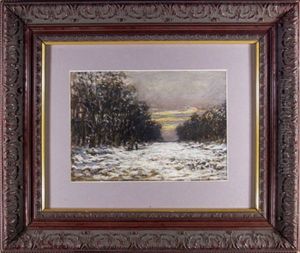Guy De Maupassant Paintings
Henri René Albert Guy de Maupassant, known as Guy de Maupassant, was not primarily an artist in the sense of a visual artist, but rather one of the 19th century's most important French writers, known for his short stories and novels. Born on August 5, 1850, in the Château de Miromesnil, near Dieppe in the Seine-Inférieure (now Seine-Maritime) department in France, Maupassant grew up in a well-off family. His mother was very literary and had a significant influence on his love for literature.
Maupassant's writing is often associated with the Naturalist movement, and he is renowned for his skill in crafting concise, tightly structured narratives with a great economy of language. He was a protégé of Gustave Flaubert, who guided his early steps in the literary world and introduced him to members of the literary elite, including Emile Zola and Ivan Turgenev.
His most famous works include short stories such as 'The Necklace' ('La Parure'), 'Ball of Fat' ('Boule de Suif'), and 'The Horla' ('Le Horla'), which reflect his interest in the complexities of human nature and the ironies of fate. His novel 'Bel-Ami' is another significant work, exploring the corruptive effects of ambition on a young journalist in Paris.
Despite his literary success, Maupassant's life was marked by illness and mental disorder. He suffered from syphilis, which he contracted during his youth, and the disease eventually led to increasing mental instability. Maupassant's health declined rapidly in his later years, and after a suicide attempt in 1892, he was committed to a private asylum in Paris, where he died on July 6, 1893, at the age of 42. Maupassant's legacy lives on through his vast body of work, which has influenced many writers and continues to be widely read and studied.
